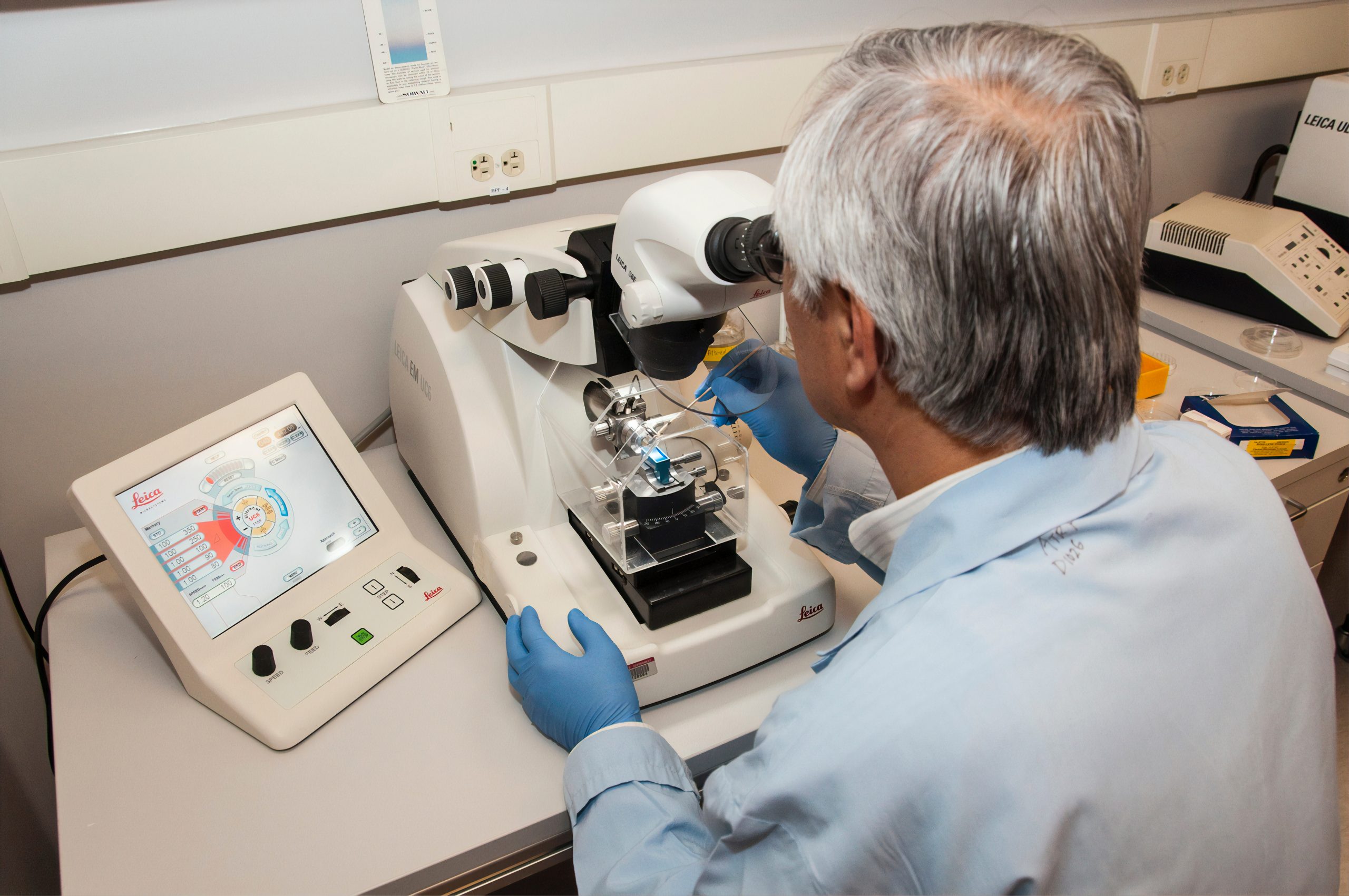With around 11,000 new cases each year, endometrial cancer (endometrial carcinoma or uterine body cancer) is one of the most common cancers in women in Germany. The incidence increases with increasing risk factors (above all obesity). Due to the initial symptoms of the bleeding disorder in the premenopause or postmenopausal bleeding, endometrial carcinoma is mainly diagnosed in the early stages by hysteroscopy with fractionated abrasion.
About the Illness
Due to the relatively early diagnosis compared to other tumors, the prognosis and survival are usually good. It is therefore all the more important that the cancer is treated comprehensively and thoroughly. Due to our close interdisciplinary exchange and our high scientific competence, we can offer you the most modern and multimodal treatment concepts for endometrial cancer at the Charité.
Emergence and Causes
The development of endometrial cancer is only partially understood to date. In principle, cancer develops as a result of changes in the genetic material in the cells of the lining of the uterus. If cells divide often, mistakes in the genetic information occur more and more by chance. The lining of the womb (endometrium), like any lining in the body, is a type that divides frequently. If such errors accumulate in the genetic information of the cells, the cells lose their normal function and uncontrolled cell growth occurs — cancer. For example, malignant growths (tumors) can grow from benign precursors or polyps. A genetic predisposition can also favor this process.
Early Detection
Prevention is actually the best aftercare. Unfortunately, there are still no established preventive examinations to detect endometrial cancer even earlier. Screening methods such as mammography for breast cancer or the Pap smear (Papanicolaou test) for cervical cancer have not been scientifically proven for endometrial cancer. Therefore, a precautionary ultrasound of the internal genital organs is not recommended in principle. Likewise, there are no tumor markers in the blood that can predict cancer or monitor its progress. Therefore, abnormal vaginal bleeding, for example, either between menstrual periods or after menopause, must always be clarified in a standardized manner.
The gold standard for diagnosing endometrial cancer is surgical hysteroscopy and scraping of the uterus (fractional abrasion). This is used to obtain tumor cells, which can be viewed under the microscope and classified in more detail. The results of this examination are partly decisive for therapy and therefore require the expertise of experienced pathologists.
Therapy
The therapy of endometrial cancer (endometrial carcinoma) must be decided individually depending on the stage of spread, involvement of lymph nodes and histology. In principle, it is made up of three different pillars: surgery, chemotherapy and radiation therapy. The optimal therapy is multifactorial and is derived from all examination results (including histological examination of the scraping and imaging), the disease status of the woman concerned and the wishes of the patient.
Offers at the Charité women’s clinic
At the Clinic for Gynecology, we are committed to understanding the woman and her illness as a whole. Due to our close cooperation with colleagues in physiotherapy, social services, nutritional advice, palliative medicine and psycho-oncology, we can provide you with comprehensive advice and support on living with a cancer diagnosis. From years of cooperation, we have been able to gather a wealth of experience and have been able to optimize our processes in dealing with cancer patients. We look forward to welcoming you to our clinic soon. In line with the motto of the Charité: Together we make a whole.
There is also a digital offer for all affected patients in German-speaking countries. At https://endometriumkarzinom-app.de/
Sources
S3-Leitlinie Diagnostik, Therapie und Nachsorge der Patientinnen mit Endometriumkarzinom
Link: https://www.leitlinienprogramm-onkologie.de/leitlinien/endometriumkarzinom/
International guidelines:
ESGO/ESTRO/ESP guidelines for the management of patients with endometrial carcinoma.
Link: https://ijgc.bmj.com/content/ijgc/31/1/12.full.pdf
Endometrial carcinoma app of the Charité women’s clinic.
Link: https://endometriumkarzinom-app.de/
